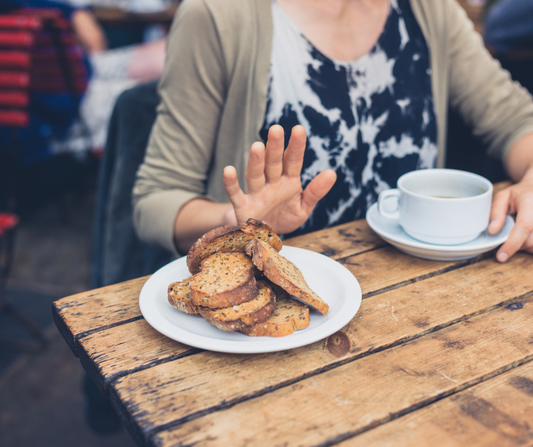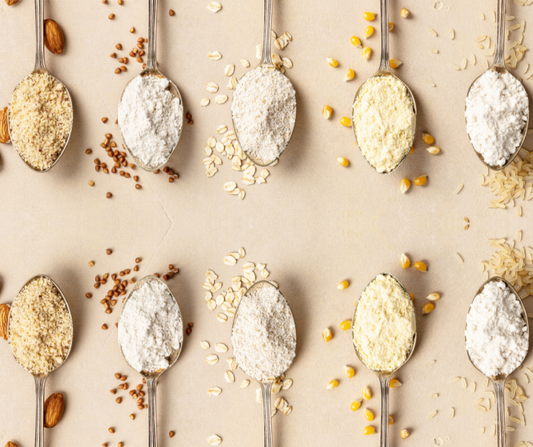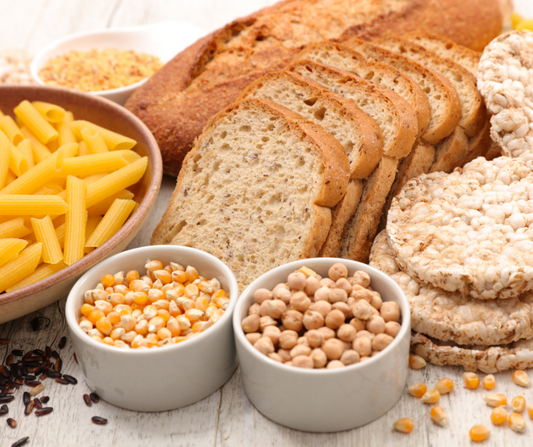FAQ
What type of yeast should I use?
Yeast is a fungus that grows in nature so by itself it is gluten free. Yeasts that you buy in the supermarket need to be chosen carefully. Choose a pure variety, not an “active yeast mixture” which has other ingredients added, including wheat.
Good choices: Edmonds Active Yeast, Tasti Active Dried Yeast, Pam’s Active Yeast, Bakels Active Dried Yeast. BE SURE TO CHECK USE-BY DATE ALSO
What temp should my water be?
Yeast likes warm conditions to grow and multiply. The optimum temperature range is around 27oC. This is the temperature the batter should be when set in the tin to rise. The temperature of the water you add should be about achieving this temperature in the batter. Too hot to put your finger in and it will kill the yeast, too cold and the batter will take an age to rise. I use water that is the same temperature I would have if I were having a bath. Obviously other factors need to be considered. If your ingredients and/or the room temperature are cold, then hotter water should be used. Similarly, on a hot day, with warm ingredients, you can get away with a slightly cooler water temperature. The water should never be less than bath temperature however. Experience will teach you. If using a breadmaker, follow their instructions.
What is the best way to measure my water?
The water quantity is crucial to the success of your bread. We recommend electronic scales, as these can accurately measure both the dry mix and the water. It is important to remember that 1 ml of water = 1 g. So, 400ml of water is the same as 400g on the scale.
Why won’t my bread rise?
There are many reasons why your bread won’t rise. Here are the main ones:
· You forgot to add the yeast – sounds stupid but can easily happen.
· Your yeast was out of date. Yeast does have an expiry date which you should check before using. If in doubt, put a little yeast in some warm water with ½ teaspoon of sugar and wait to see if a froth forms on the surface. No froth within a few minutes is an indication your yeast is not fresh
· Your water was too warm and it killed the yeast. If you cannot hold your finger in the water, it is too hot
· The batter was too cold. Yeast requires warmth to grow; cold kitchens and cold ingredients slow the rate of fermentation
· The water contains too much chlorine. Sometimes chlorine, or other water purifying agents are at such high levels that it destroys yeast activity. Try using bottled water instead to see if it improves the rise.
Where should I put my bread to rise?
Yeast likes warm moist conditions to grow so finding a warm place to let it rise is important. Examples include a sunny window sill, on a rack in a sink of hot water, on top of a heater/coffee machine or in a hot water cupboard. Putting the whole tin in a large loose plastic bag can also create the ideal conditions that yeast like to grow in.
What is the best cooking temperature?
Our bread works well baked at 180oC setting. However, every oven is different, some cook hotter than the setting while others cook slower. Some ovens do not have precise dials so getting an accurate temperature is difficult. If you know your oven is temperamental, it may be worth purchasing an oven thermometer to test if the actual temperature matches the setting. It is advisable also to place a tray of water on the shelf under the bread tin, to provide a moist cooking environment. Also, you could try putting some foil over the top half way through the cooking process if you think the top is browning too much.
How do I store my bread?
It is best to store your cooled loaf wrapped in a wax wrap or in a large airtight container e.g a large clip-it container with a paper towel on the bottom. Make sure it has fully cooled before storing however, or the bread will sweat. Leaving the lid a tiny bit open allows a bit of breathing space and prevents the bread becoming soggy or mouldy. Don’t store bread in the refrigerator as it will dry out. Any bread that is older than a few days should be sliced and frozen otherwise it will go mouldy. That way you can take out slices as you need them.
The best way to store the bread is in a large waxed wrap. It stays wonderfully moist this way but again should not be stored more than 3 days as it will eventually go mouldy.
Does it make good sandwiches
Yes! Especially when freshly baked. It is important to fully cool the loaf or it will tear on slicing. After a few days or when it becomes drier, it is best to toast the bread before eating
Will my bread turn out differently if I use a bread maker?
The recipes have been designed to work with both manual preparation and a bread maker. However, bread makers vary hugely, and some do not have the short cycle needed for gluten free bread. The bread maker used to test these breads had a gluten free cycle, but even that was found to be too long for a perfect loaf using our mixes. The shortest cycle – 2 hours, was the best. You will need to experiment until you find a cycle that works.
Why do I need to mix the ingredients to a batter first before transferring to the bread maker pan?
With traditional wheat flour-based breads, you simply add all the ingredients to the bread maker pan and let the machine do the rest. This does not work however with gluten free flours which will not mix well and will give you a loaf with floury bits throughout. Mixing ingredients together to a batter before transferring to the pan solves this problem and will give you the best result
Gluten Free Resources
View all-

Coeliac Disease vs. Gluten Intolerance. What is...
Gluten is a protein found in wheat, barley and rye. To people with coeliac disease, it triggers an autoimmune reaction in the small intestine causing damage to the cells lining...
Coeliac Disease vs. Gluten Intolerance. What is...
Gluten is a protein found in wheat, barley and rye. To people with coeliac disease, it triggers an autoimmune reaction in the small intestine causing damage to the cells lining...
-

Common wheat flour substitutes
These do not behave in the same way as wheat flour; gluten-free versions of bread and baked goods will not be the same as their gluten-containing counterparts. It is important...
Common wheat flour substitutes
These do not behave in the same way as wheat flour; gluten-free versions of bread and baked goods will not be the same as their gluten-containing counterparts. It is important...
-

What CAN I eat if I can’t eat gluten?
There is a tendency amongst people newly diagnosed with coeliac disease to focus on and grieve for the foods they cannot have. A more positive approach is to focus on...
What CAN I eat if I can’t eat gluten?
There is a tendency amongst people newly diagnosed with coeliac disease to focus on and grieve for the foods they cannot have. A more positive approach is to focus on...



